If you're interested in exploring what yoga has to offer, but are unsure where to begin, we can help. Millions of people around the world practice some form of yoga for a range of benefits, including spiritual, mental, emotional, psychological and physical.
Before getting started, it's worth taking some time to learn about the cultural and historical roots of yoga. In its origins, yoga is a spiritual practice that can help develop your body and mind. In recent years, it's also become popular among fitness enthusiasts.
Here are some things to know about yoga before you get started:
- What is the history of yoga? Though yoga is well-known today for its physical postures and breathing exercises, it has a long, complex cultural history. The practice of yoga is thought to have originated in India thousands of years ago. Yoga is mentioned in ancient Hindu texts written in Sanskrit, the Rigveda and Upanishads, and is believed to have developed into a more systematic study around 500 B.C. by the sage Patanjali who codified it in the "Yoga Sutras." Historical texts from Buddhist and Jain traditions also mention yoga.
- What is the purpose of yoga and its benefits? The word "yoga" comes from the Sanskrit word "yuj," which means "to yoke" or "to join." Yoking, or bringing two animals together, in effect creates a union between the two. Yoga often refers to this idea of a union between mind and body. And yoga has roots as a spiritual practice that focused on this harmony and has evolved over time with different schools and teachings. Today, many people practice yoga for a number of different reasons, both spiritual and physical. Among them: to help build strength, balance and flexibility; to improve general wellness; or to cope with stress.
- Who can practice yoga? Anyone can practice yoga. You don't have to have a certain fitness level or fancy clothing to learn or participate. Despite common perceptions and images associated with modern-day yoga, you don't need to be flexible or have a certain body type to practice.
- How do I learn yoga? You can learn by taking beginner classes at yoga studios. Additionally, you can start by practicing at home, studying online, reading books, or finding free or donation-based community classes. Beginner classes are a great way to try various styles of yoga and discover which one you like best. Learn more about some of the different styles of yoga and their origins below.
- What do I need to get before I start yoga? There's nothing special you'll need to get started other than some comfy clothes that stay put as you stretch and move your body. Some yoga studios provide mats, though you can borrow one from a friend in the beginning. Consider investing in your own once you know you'll stick with your new practice.
The Yoga Practice
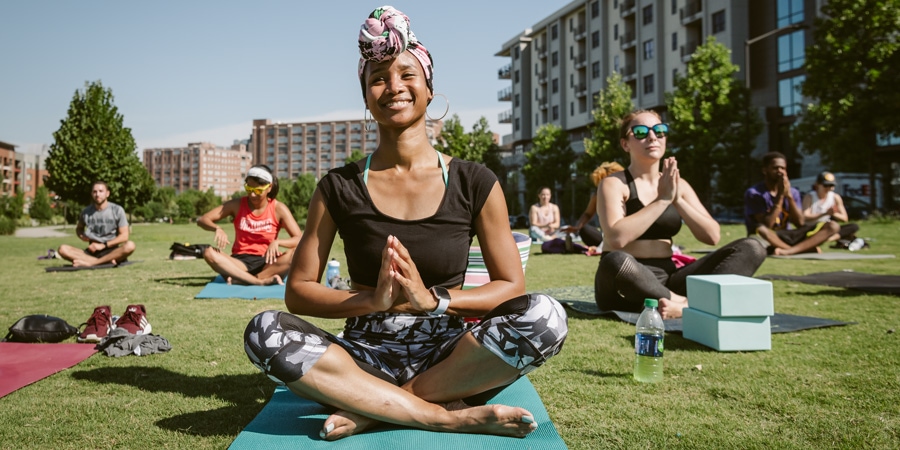
Practicing yoga on a regular basis can offer many benefits, including improved flexibility, balance, strength and stamina, while also helping you develop mindfulness and concentration. The mental dimension is what sets yoga apart from physical training. You'll do plenty of stretching and strengthening, but your yoga teacher will often encourage you to shift your thinking as you challenge your body. This unique aspect of yoga is one reason why it resonates so deeply with new and longtime practitioners.
What are the eight limbs of yoga? Yoga of Eight Limbs, or classical yoga, is documented in the Yoga Sutras of Patanjali, one of the classical yoga texts developed sometime between 500 B.C. and A.D. 400 by the sage Patanjali. You may have heard of asana, the movement and physical postures, but there are seven additional aspects of the eight-limbed path in the progress toward self-realization. Each of the eight limbs addresses a different aspect of the path:
- Yama (ethical restraint),
- Niyama (personal observance),
- Asana (movement and physical postures),
- Pranayama (breath mastery),
- Pratyahara (withdrawal of the senses),
- Dharana (concentration)
- Dhyana (meditation)
- Samadhi (union)
What if I don't know what all the yoga terms mean? Educating yourself about Sanskrit and other common yoga terms can be a meaningful part of the experience as you embark on your yoga practice. You can ask your teacher to help explain what words mean, or spend some time learning on your own. Learning and properly using the terms is one way to show respect to the cultures that yoga comes from. We've provided a guide to some yoga terms below.
Yoga Classes
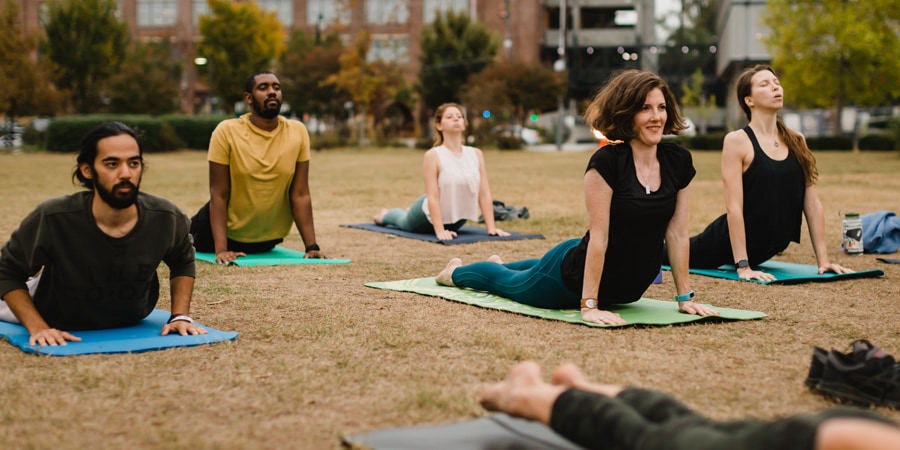
Classes are a great way to get into yoga, and it's the way most people choose to regularly practice. Many classes are taught at independent yoga studios, though there are also many national brands of studios. Other options include places like health clubs, community centers and spas. These can be good places to find introductory or gentle yoga classes, but they're less likely to offer the full spectrum of yoga classes you'll want as you progress. Many teachers also offer virtual classes. REI also offers yoga classes.
What can I expect from a yoga class? If you're new to yoga, check with your doctor before starting a new physical routine. It's also a good idea to check in with the instructor at the beginning of class and inform them of any ongoing physical issues you may have. Most classes are an hour or an hour-and-a-half long and involve mental focus, breathing techniques and a series of poses. What you shouldn't find is a competitive or intimidating environment—yoga is especially welcoming to newcomers.
There are many styles of yoga and instructors with differing approaches. Yoga is in part meant to be a mental and physical challenge. If you struggle in a class, don't give up. There are many different styles and approaches to practicing yoga, so consider trying different classes or instructors until you find one that resonates with you.
What if I can't keep up with the rest of the class? One of the beauties of yoga is that it is utterly non-competitive. Your instructor will encourage you to challenge yourself, but always remember to listen to your own body and only do what you feel is right for you.
Find a Yoga Class at REI Outdoor School
Yoga styles
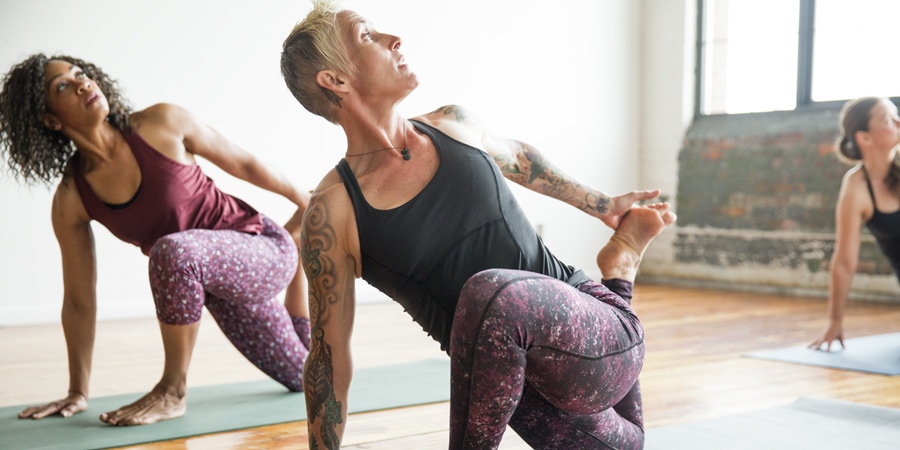
There are many kinds of yoga practices in the U.S., and prominent styles can have multiple names or draw from several different traditions. Some styles focus on breathing or movement and emphasize a physical focus, while others center on yoga philosophy or meditation. If you try a beginner yoga class, you'll likely get an introduction to several different styles. Eventually, you'll settle on a class that matches your preferences and mood. Here's an overview of a few yoga styles:
- Hatha: Because some use it as a general term for yoga practice, hatha yoga refers broadly to postures and is often associated with beginner classes. This type of yoga emphasizes proper breathing and posture. Poses are held at length, so you're not likely to feel particularly winded during a session. (That said, sometimes holding poses is more challenging than flowing through them.)
- Vinyasa: This style of yoga is also called "flow" because you move fluidly through a series of poses while emphasizing breath. Vinyasa yoga emphasizes breath and movement through a gradual progression from pose to pose.
- Ashtanga: One of the more physically demanding styles of yoga, Ashtanga emphasizes a particular set of poses. The Indian scholar Pattabhi Jois is credited with developing the method of Ashtanga.
- Anusara: While all yoga styles include some level of concentration and focus, Anusara places particular emphasis on mindfulness and meditation.
- Iyengar: This style of yoga focuses intensely on proper body alignment and was developed by B. K. S. Iyengar, a yoga teacher and scholar in India. Practitioners often use props like blocks or belts to find the right posture during poses and breathing exercises.
- Gentle/restorative: This type of practice is perfect for those who want a relaxed experience that typically involves more stretching than strength exercises. Gentle classes are also a good option for those with physical limitations because of an injury or disability.
- Prenatal: Aimed at helping women prepare for the experience of childbirth, prenatal classes usually focus on breath work and poses that support the body leading up to birth. Many prenatal classes aim to foster a sense of community and mental support.
- Hot yoga: If you enjoy getting sweaty, this newer style of yoga may be for you. Performed in a studio where the temperature is cranked high, hot yoga's popularity stems from how easy it is to warm up your muscles in hot conditions.
Yoga Gear and Clothing
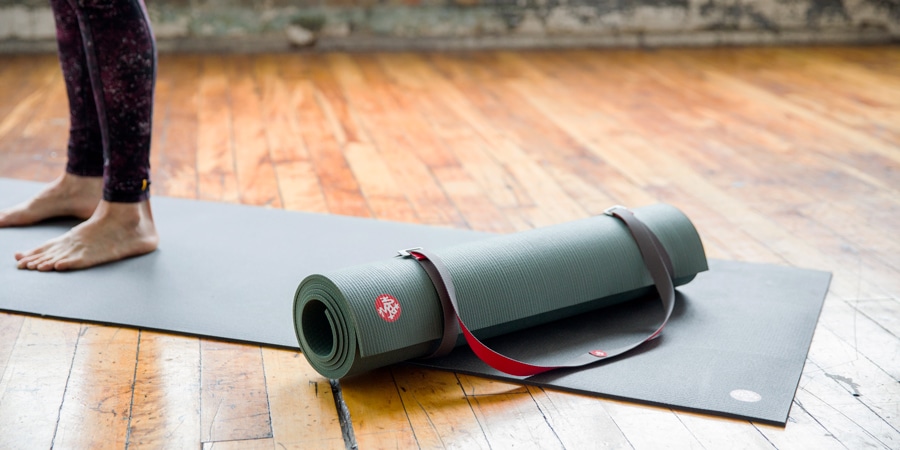
The essentials are a flat, comfortable space (indoors or out), water for hydration and a mat. You might also decide you want a few simple yoga props to enhance your home practice, although that can wait until after you've talked to your instructor about recommendations and class needs.
Most types of fitness clothing work just fine for yoga, especially when you're getting started, but you may find you prefer certain styles—especially those that offer ample stretch. Look also for clothing with few seams, no pockets and minimal bulk.
Yoga Terms
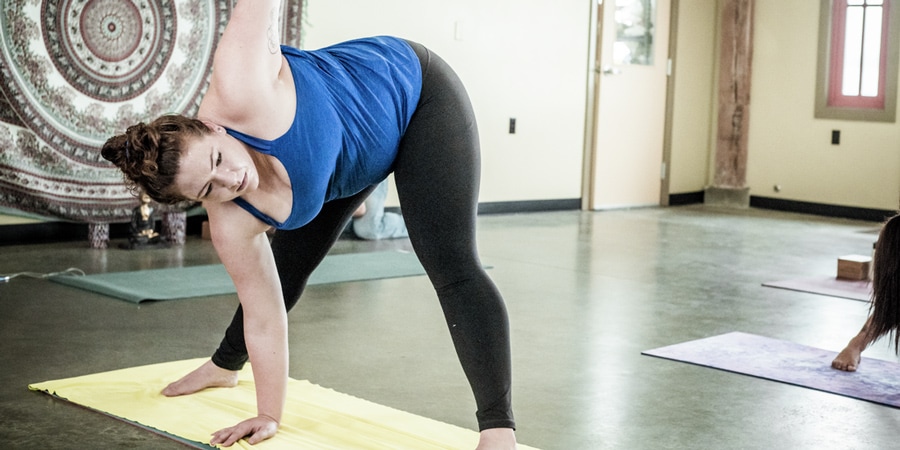
Yoga's rich vocabulary, much of which comes from Sanskrit, is derived from its origin in India. Learning new words can be confusing at first, but they're part of yoga's history. Below are a handful of yoga terms you might encounter early on:
- Asanas: Physical poses or postures; these are the foundation of a yoga session.
- Pranayama: A breathing technique; the fourth of eight limbs of yoga. Pranayama is a Sanskrit word meaning "control of breath."
- Om: A Sanskrit mantra (sacred utterance) that helps to center and focus your mind.
- Child's pose: A basic asana you'll learn in a beginner class; it can serve as a "safe place" whenever you feel the need to pause, rest and breathe during a workout.
- Savasana: The "corpse pose," where one lies still in a state of relaxation. It is often the final pose in a class.
- Namaste: A Sanskrit salutation, typically said at the end of class, which means "I bow to you."


